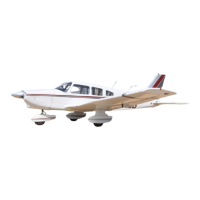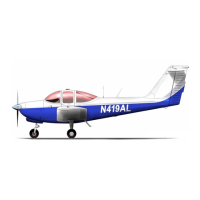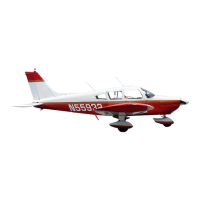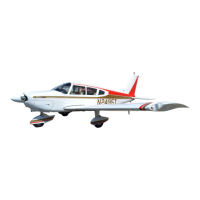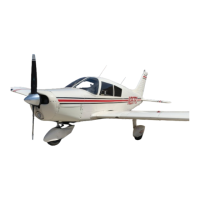THE NEW PIPER AIRCRAFT, INC.
PA-32-301FT / 301XTC
MAINTENANCE MANUAL
PAGE 7
Jun 1/03
2I17
27-00-00
E. Cable Maintenance
CAUTION: TO AVOID REMOVAL OF CORROSION-PREVENTATIVE COMPOUNDS AND
CABLE INTERNAL LUBRICANT, DO NOT USE VAPOR DEGREASING, STEAM
CLEANING, METHYLETHYLKETONE (MEK) OR OTHER SOLVENTS.
CAUTION: DO NOT OIL CONTROL CABLES.
Frequent inspections and preservation measures such as rust prevention treatments for bare cable
areas will help to extend cable service life. Where cables pass through fairleads, pressure seals, or
over pulleys, remove accumulated heavy coatings of corrosion prevention compound. Provide
corrosion protection for these cable sections by lubricating as specified in the Lubrication Chart,
12-20-00.
F. Cable Fittings
(1) 100 Hour Standard Inspection
Check swaged terminal reference marks for any indication of cable slippage within fitting.
Inspect fitting assembly for distortion and/or broken strands at the terminal. Check that all
bearings and swivel fittings (bolted or pinned) pivot freely to prevent binding and subsequent
failure. Check turnbuckles for proper thread exposure and broken or missing safety wires/clips.
Pay particular attention to corrosion and “pitting” on cable terminals, turnbuckles and cable
fittings. Any corrosion or pitting found requires replacement of the corroded fitting and/or cable.
(2) 100 Hour Special Inspection
For airplanes 15 years old or older, using a 10X magnifier, visually inspect the entire surface of
each cable terminal, turnbuckle, or other cable fitting for corrosion or cracking. Inspect under
safety wire or clips wrapped around the cable or fitting. Any evidence of corrosion or cracking,
however minute, is cause for replacement. A logbook entry documenting the replacement of a
cable terminal, turnbuckle, or other cable fitting relieves the inspection requirement for that
fitting only, until such time as that fitting has been in service for 15 years.
G. Pulleys
Inspect pulleys for roughness, sharp edges, and presence of foreign material embedded in the
grooves. Examine pulley bearings to assure proper lubrication, smooth rotation, freedom from flat
spots, dirt, and paint spray. Periodically rotate pulleys, which turn through a small arc, to provide a
new bearing surface for the cable. Maintain pulley alignment to prevent the cable from riding on
flanges and chafing against guards, covers, or adjacent structure. Check all pulley brackets and
guards for damage, alignment, and security.
H. Pulley Wear Patterns
Various cable system malfunctions may be detected by analyzing pulley conditions. These include
such discrepancies as too much tension, misalignment, pulley bearing problems, and size
mismatches between cables and pulleys. Examples of these conditions are shown in Figure 5.
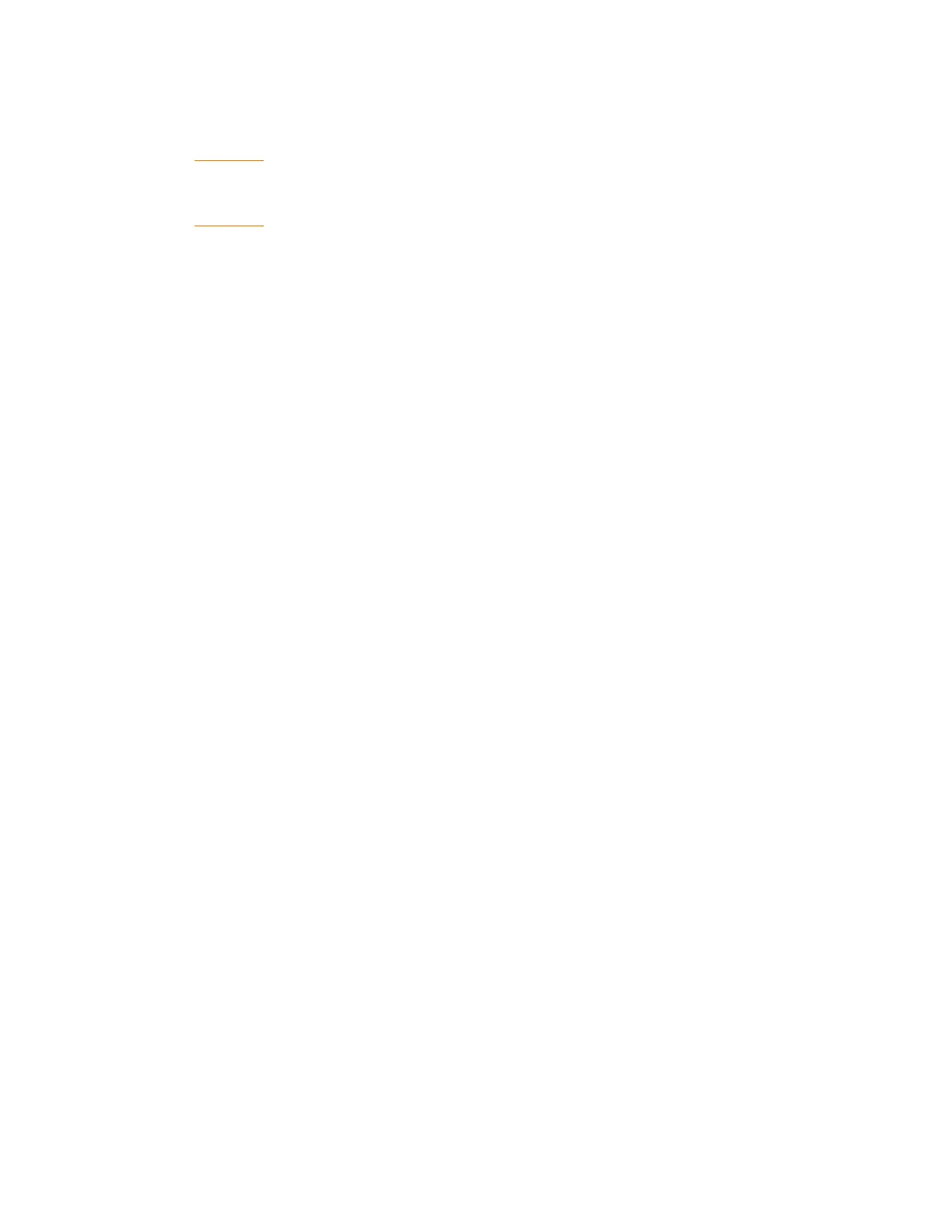